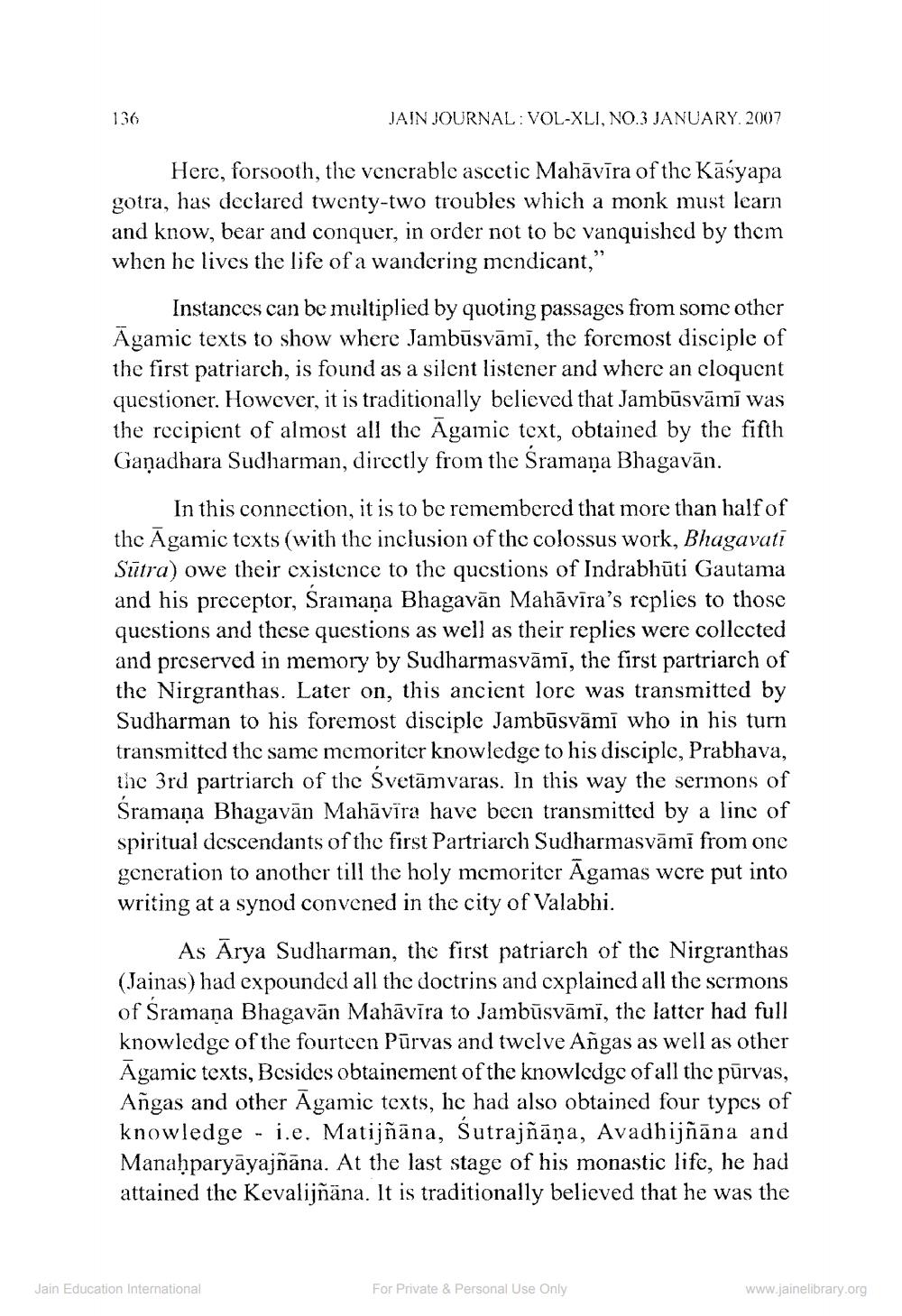________________
136
JAIN JOURNAL: VOL-XLI, NO.3 JANUARY 2007
Here, forsooth, the venerable ascetic Mahāvīra of the Kāsyapa gotra, has declared twenty-two troubles which a monk must learn and know, bear and conquer, in order not to be vanquished by them when he lives the life of a wandering mendicant,"
Instances can be multiplied by quoting passages from some other Agamic texts to show where Jambūsvāmī, the foremost disciple of the first patriarch, is found as a silent listener and where an eloquent questioner. However, it is traditionally believed that Jambūsvāmī was the recipient of almost all the Āgamic text, obtained by the fifth Gañadhara Sudharman, directly from the Sramaņa Bhagavān.
In this connection, it is to be remembered that more than half of the Āgamic texts (with the inclusion of the colossus work, Bhagavati Sūtra) owe their existence to the questions of Indrabhūti Gautama and his preceptor, Sramaņa Bhagavān Mahāvīra's replies to those questions and these questions as well as their replies were collected and preserved in memory by Sudharmasvāmī, the first partriarch of the Nirgranthas. Later on, this ancient lore was transmitted by Sudharman to his foremost disciple Jambūsvāmi who in his turn transmitted the same memoriter knowledge to his disciple, Prabhava, the 3rd partriarch of the Svetāmvaras. In this way the sermons of Sramana Bhagavān Mahāvīra have been transmitted by a line of spiritual descendants of the first Partriarch Sudharmasvāmī from one generation to another till the holy mcmoriter Āgamas were put into writing at a synod convened in the city of Valabhi.
As Ārya Sudharman, the first patriarch of the Nirgranthas (Jainas) had expounded all the doctrins and explained all the sermons of Sramana Bhagavān Mahāvīra to Jambūsvāmī, the latter had full knowledge of the fourteen Pūrvas and twelve Añgas as well as other Agamic texts, Besides obtainement of the knowledge of all the pūrvas, Añgas and other Āgamic texts, he had also obtained four types of knowledge - i.e. Matijñāna, Sutrajñāņa, Avadhijñāna and Manaḥparyāyajñāna. At the last stage of his monastic life, he had attained the Kevalijñāna. It is traditionally believed that he was the
Jain Education International
For Private & Personal Use Only
www.jainelibrary.org




